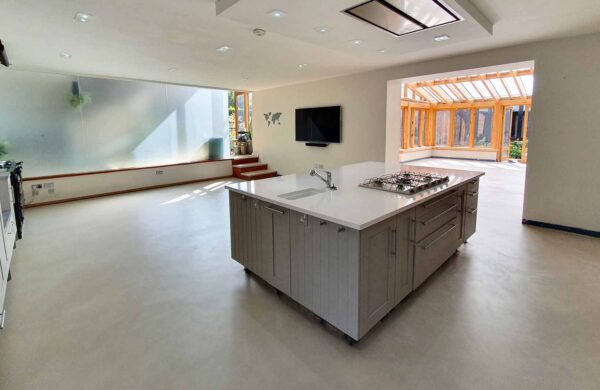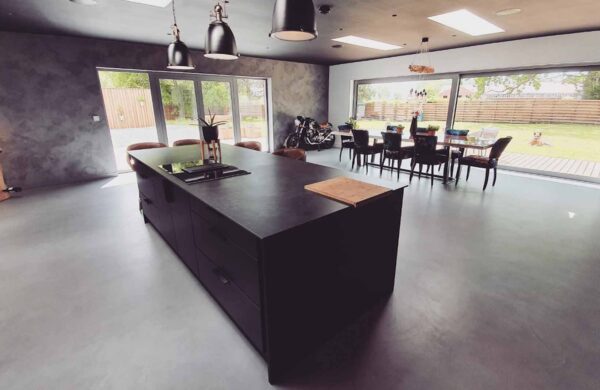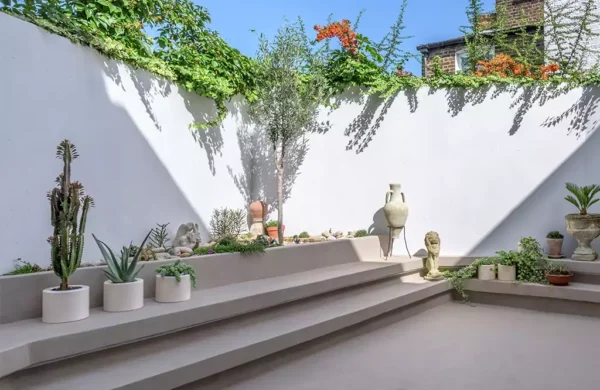
Microcement in Japan: Exploring design, innovation and application
Microcement is gaining international recognition for its versatility, seamless finish and ability to adapt to modern design trends. In Japan, a country where architecture and interiors often blend tradition with contemporary innovation, microcement is gaining attention as a practical and aesthetically pleasing solution.
This article explores the role of microcement within the Japanese design landscape, ranging from minimalist-inspired interiors to high-performance finishes for bathrooms and commercial spaces.
What makes microcement relevant to Japanese design?
Japanese interiors are often defined by balance, functionality and a respect for materials.
Microcement aligns with these values because it offers:
- Seamless finishes that reduce visual clutter in compact spaces.
- Durability suitable for high-traffic urban homes and commercial venues.
- Moisture resistance is essential in humid climates and bathroom environments.
- Versatility that complements both natural materials like wood and stone, and modern materials like glass and steel.
Microcement in Japanese bathrooms and wet rooms
Bathrooms play a central role in Japanese homes, often designed as spaces of relaxation and ritual. Microcement is well-suited to this environment because it is:
- Fully waterproof when installed correctly.
- Easy to clean, reducing maintenance in busy households.
- Compatible with underfloor heating systems, a feature growing in popularity in colder regions of Japan.
The seamless surface also removes the need for grout lines, a detail that aligns with the Japanese preference for simplicity and precision.
Outdoor applications of microcement in Japan
Japan experiences a varied climate, ranging from snowy Hokkaido to subtropical Okinawa. For outdoor use, such as terraces, courtyards and exterior facades, microcement offers:
- UV stability with the right protective finish, ensuring long-lasting colour.
- Slip-resistant textures suitable for areas exposed to rain.
- Design flexibility that allows integration with traditional Japanese gardens or contemporary architecture.
How microcement supports minimalist and modern Japanese interiors
Minimalism has deep roots in Japanese culture, reflected in both traditional Zen principles and modern architecture. Microcement complements this by:
- Creating neutral backdrops that allow furniture and natural light to take focus.
- Offering a broad palette of colours, from warm, earthy tones to cool greys.
- Providing continuous surfaces that enhance spatial flow in compact apartments or open-plan homes.
Microcement in Japanese commercial spaces
Tokyo and Osaka are hubs of retail, hospitality and office design.
Microcement offers advantages for these sectors, including:
- High durability in spaces with constant foot traffic.
- Design adaptability to both luxury retail environments and minimalist cafés.
- A sustainable choice when paired with eco-friendly production and installation methods.
The importance of product performance
Not all microcement products perform equally, and the Japanese market places high value on precision and reliability. Specific systems, such as those developed by Forcrete, set themselves apart through features like:
- Fully waterproof performance without the need for a separate sealer, ensuring long-term reliability in humid climates.
- High-strength formulations capable of handling both residential and commercial wear and tear.
- Professional use only systems, guaranteeing that installation meets exacting standards.
- An approved installer network, providing reassurance of quality artistry.
These factors help ensure that microcement projects in Japan meet both design expectations and technical performance requirements.
Challenges and considerations in Japan
While microcement presents exciting opportunities, there are practical aspects to consider in the Japanese market:
- Installer expertise: as a specialised material, it requires trained professionals for consistent results.
- Climate conditions: Correct preparation and sealing are essential for managing humidity and temperature variations.
- Awareness: Although microcement is gaining popularity in Japan, its use remains less common than in Europe, underscoring the importance of education within the design community.
FAQs about microcement in Japan
Is microcement popular in Japan?
Microcement is still emerging in the Japanese market, but it is gaining interest among architects and interior designers who seek modern, seamless finishes.
Can microcement handle Japan’s humid summers?
Yes. When applied with the correct preparation and professional systems, microcement resists moisture and performs well in humid climates.
Is microcement suitable for Japanese apartments with limited space?
Absolutely. Its seamless surface makes smaller spaces feel larger and creates a minimalist aesthetic that aligns with Japanese interior trends.
How does microcement compare with tiles in Japanese bathrooms?
Unlike tiles, microcement provides a continuous surface without grout lines, thereby reducing cleaning needs and offering a sleek, modern finish.
Final thoughts on microcement in Japan
As Japan continues to balance tradition with contemporary innovation, microcement emerges as a material that harmonises with both cultural values and modern performance requirements.
Its seamless finishes, durability and adaptability make it a strong fit for bathrooms, interiors and even outdoor applications across Japan’s diverse climates.
For architects, designers and homeowners, the growing availability of advanced systems ensures that microcement projects can meet the highest standards of strength, waterproofing and finish.
As awareness expands, microcement in Japan is set to become more than just a design trend; it will be a lasting contribution to the country’s architectural and interior landscape.
To learn how Forcrete can assist you, please contact us today.









